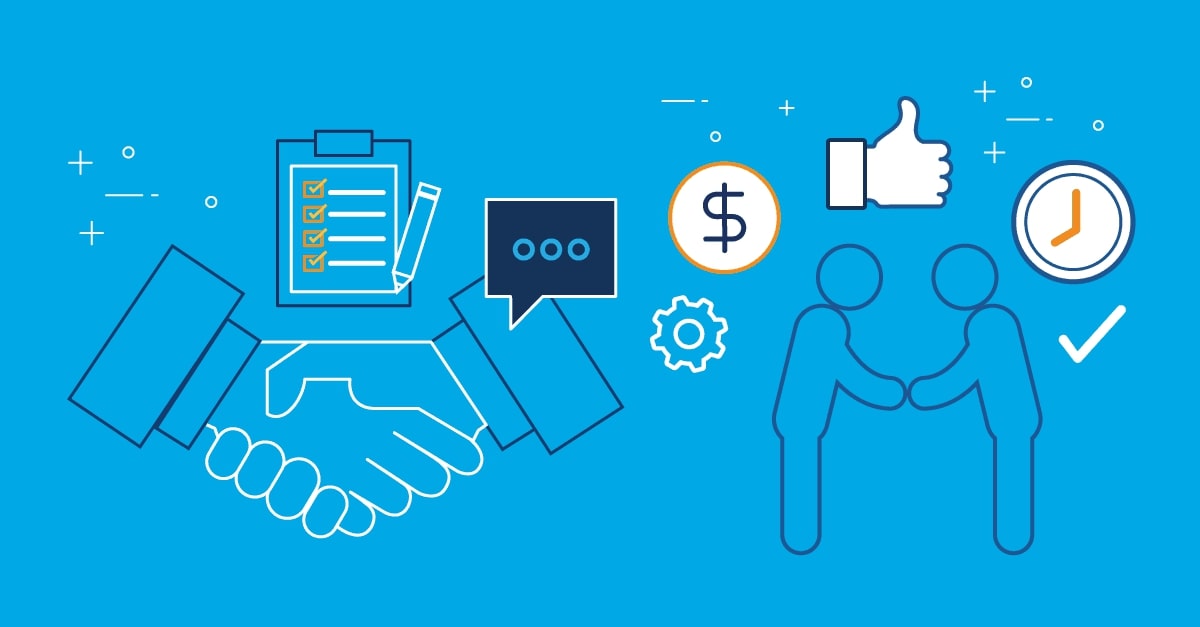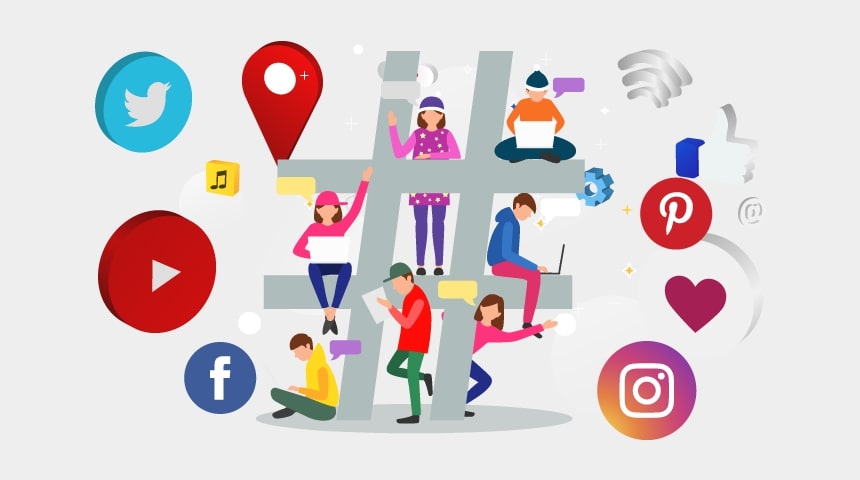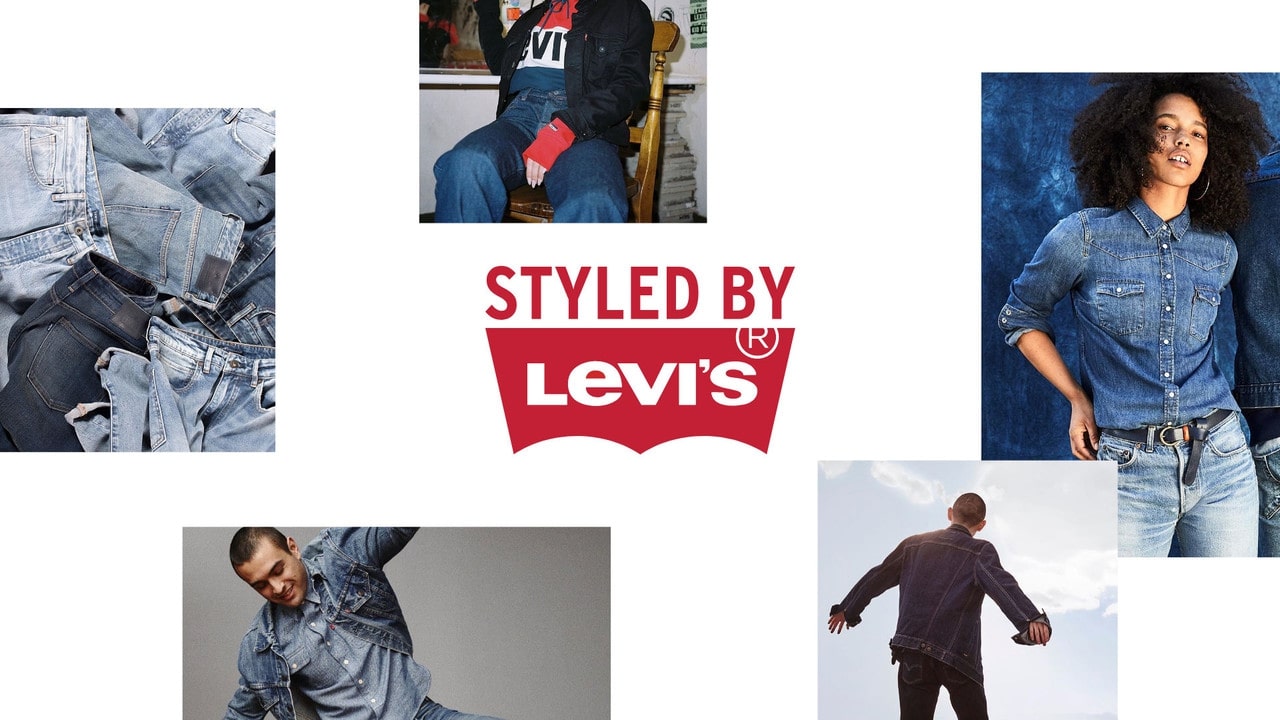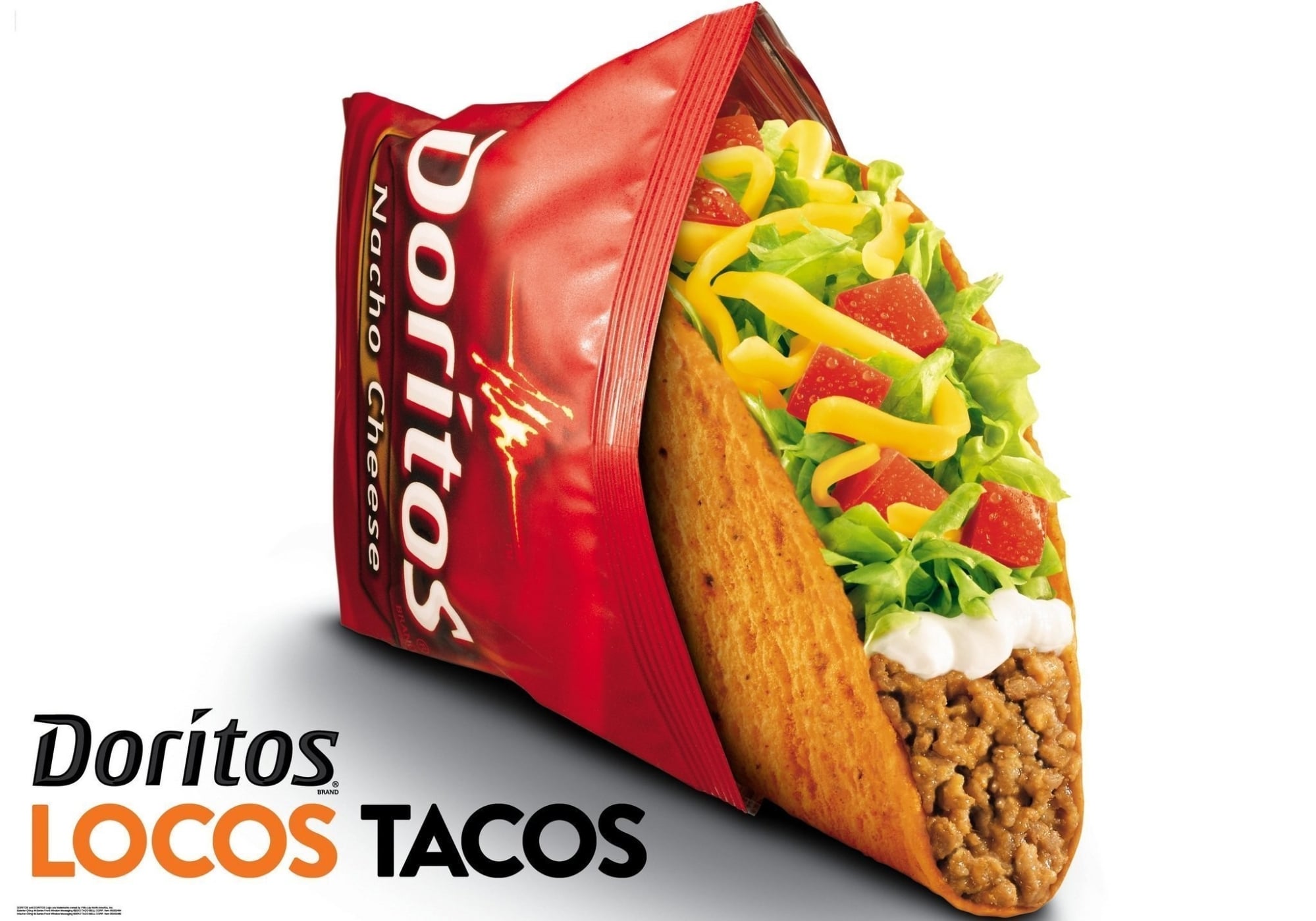Partnership marketing strategy: Everything you need to know
Partner marketing initiatives have demonstrated that many organizations have been effective in accelerating growth. You can optimize your marketing impact while sharing the costs by working with companies that offer a relevant portfolio. You can benefit each other’s audience by combining strengths in content generation and maximizing commercial monitoring with the correct partner marketing plan.
We are going to witness faster progress in technology and greater connectedness over the next decade or two, but this unintentionally results in an even higher competitive rate. Common businesses should stick together, cooperate and combine resources. Brand sharing is becoming more and more important and profiting from each other’s proposals. Partnership marketing is the solution for those companies who not only want to survive but to prosper in the 21st-century market. In this article, we explore Partner Marketing Strategy more closely and introduce a new framework.
What is partnership marketing?
Partnership marketing means any strategic partnership between two companies or between a company and a person with a significant individual brand when both sides work together to achieve each other’s goals. Partner marketing is often referred to as partner marketing or just partnership.

This is where a primary brand has the perfect product or service to supplement a secondary brand and boost its value proposal by using target customers. A partner can effectively raise your brand awareness, attract new audiences, develop leadership and grow your brand’s client base with a trustworthy voice outside your organization. Under the best practice, partner marketing activities function as well as a marketing strategy for B2C or B2B and can be used to improve physical or digital marketing activities.
7 Types of partnership marketing

These are the most frequent types of small, medium, and big enterprises partnership marketing. Although one model can succeed in an enterprise, it cannot necessarily fit into another’s scope. Brands may choose to utilize only one or more of these types or to combine several of them to make a hybrid. These types are not set - they are flexible and, depending on the relationship concern, can be interchangeable.
1. Affiliate marketing
Affiliate marketing is a marketing performance technology where websites generally referred to as publishers promote your product or service for a monetary reward. Both employ the primary partner, which is typically called an announcer, and the secondary partner, which is frequently known as the affiliate. These partners operate together, enhancing the primary brand’s sales and the secondary gain from the commissions generated by lead or sale.
If the major brand looks for a solution that allows all the creative banners to upload, enables the member to select the campaign type, and presents all results on a central site through a related tracking link, they employ an in-house affiliate program. Or else, both parties will use a network that registers the advertiser and the publisher and uses their services through the external portal of the network. Or they work directly with an agency that administers the affiliated portfolio and its operations, like ads and tracking links.
Affiliate marketers can use several tactics to promote an advertisement. These tactics might include text links, newsletters, banners, ads, articles, pages, etc.
2. Distribution
Distribution is where one party agrees to cross-market or combine the products or services of another partner into its distribution channels to the client base agreed upon. The distribution of a product or service to a partner exists in two major forms. The first is to bundle the products that your partners offer as a bundle inbox or package inserts, such as packaging gifts, product promotion itself, or online purchasing bundles. The second is cross-marketing targeted at the collaborative marketing efforts, via a distribution channel, of both parties.
One of the simplest and most acknowledged methods of partnership marketing is to distribute a partner brand in your store and alongside your products. To achieve the most efficient consumer goal, online, offline and mobile have their particular value in the distribution of a partner brand. Some common formats are e-mail vouchers, mobile coupons, in-house direct demonstrations, QR codes, etc.
3. Content marketing
Content marketing is the development of content relevant to your clients. Content partnerships involve developing content in conjunction with a partner brand, which is subsequently shared or promoted by a target audience.
A brand can participate in content partnerships in two major ways. On the one hand, both brands work together to generate the content for mutual recognition between the two brands. The primary brand, on the other hand, produces content but works together with a secondary brand to push the content. Sharing links is linking to your own website’s content. This creates alignment, brands are aligned and SEO is advanced.
4. Product placement
Product placement is the subtle placing of a brand into a media channel. It is considered to be a merger of sponsorship and promotion which works well with large-scale TV and film productions. The main ways in which products are presented in the media are reflected in key forms of product placement through the brand-and-media partnership.
The first is a subtle placing, in which the brand logo, a backdrop of the product, or an elusive sign of product can be seen in the scenes of television and film. In contrast, direct advertising, such as product endorsement, comes in a media program. The placement also takes place through using celebrity endorsers who are encouraged to wear or use the apparel.
5. Joint product partnerships
A joint product partnership happens when two organizations agree to build or alter a new product, or a current one, to provide the client with added value. The product is often combined to achieve a mutual target audience of both products. The influence on internal product departments is displayed in three primary collaboration options.
The first option is to provide the service of a partner brand for a new or existing product. The other alternative is the white-label solution, where a corporation sells or leases its technology for a brand partner. The partner brand will then use it under a brand name of its own. The last option is a merger of products in which both brands have opted to combine their items. It comes in several formats, depending on the product line, from complete to partial fusions.
As digital technologies have broken through in the last decade, such partnerships are currently growing much further. The most popular forms that have emerged are cost-sharing, new product launches, new market penetration, etc.
6. Licensing
Licensing is a business relationship when a company offers a license to produce its product using its image as a brand for the agreed payment or collaboration by another company. In terms of licensing partnership marketing, two strategies are chosen for the brands to collaborate.
Firstly, most brands that opt to license their brand choose to sell their product or service to their partners at a certain price. Or certain brands decide to participate in and actively work with the partner in the license arrangement. A company licensing another brand might use it in different ways. It is extremely time-consuming and expensive to build a brand, one with an excellent reputation. The fastest and simplest way to get it is for many companies. This is the licensing of a business; it greatly increases the link between a global brand and the product.
7. Sponsorship
The sponsorship tactic is the idea of putting a brand alongside an event as a partner or supplier, intending to increase brand recognition and reputation. The goal of a sponsorship is to reach both existing and new consumers as widely as possible by providing a brand association in the consumer’s eyes, and linking a brand proposal to an event so that the consumer receives education about the product.
Sponsorship is available in many different forms and sizes. Some of the most popular types are event sponsorships, sports sponsorship, media sponsorship, etc. Global companies spend millions of billions of cash on marketing sponsorships for several decades for various purposes, from raising brand awareness, improving product understanding to up-scaling local markets.
Benefits of using a partnership marketing strategy

Increased value proposition
Partnership marketing is more than just promotions connecting different brands. From marketing to merchandising and product packaging all strategic alliances can have an influence. Joint distribution and sales prospects may also begin with collaboration at this level. Co-marketing so combines the strength of companies, increases the value offering, enhances the client experience, and extends sales avenues.
Expanded revenue streams
Partnership marketing is a big victory for your less risky sales. You have already worked out the flaws and a product when you join a company that has a certain expertise. You can therefore easily start to generate extra revenue by partnering with a firm that already has a foundation, product, scalable solutions, and marketing support to help your business succeed.
Boosted promotion
You do not have to establish a customer base from the beginning by working with other brands. It helps you to reach consumers who have shown loyalty and are interested in your items. Marketing collaborations with the same category of products and services form a basis for your brand. Partnerships assist every organization to reach an audience that wants its products and services.
Enhanced quality leads
Marketing partnerships also boost your audience and leads. Since you are selling a new product you can reach a new audience and target those with which you have already connected or engaged. And many leads will qualify themselves since they realize they need this new service.
7 Best partnership marketing strategies to scale your business
1. Choose the right marketing partners

In the first place, you have to make sure both companies and the viewers have a meaningful partnership. Choose a partner who’s like a public, but who doesn’t compete directly. The partner may be in the same broader industry as your brand or just a brand that relies on the same particular demographic information.
Find out what both your audience and your potential partner can provide together. Make sure that you can give the other brand’s audience something that the brand cannot do for itself. Also, analyze how your possible partner can provide your audience with distinct benefits.
Check whether every partner can help achieve at least one business objective before entering the partnership formally. Find and discuss all relevant common objectives together. Identify clearly what you and your possible partner each other give that you cannot do on your own.
To get the quickest answers, ask yourself some questions:
- Who are the partner’s major buyers?
- What are their obstacles to the united offer, concerns, and dreams?
- How does the seller and partner portfolio mix add value?
- What are the most efficient messages to share per purchaser level?
- What formats of content and media are most appropriate?
2. Set mutual partnership goals

It is time to set targets for your partnership marketing when you have agreed with a new partner or partner. You must ensure that your goals are measurable to assess the performance of your relationship. This offers a dependable approach to track the performance of your collaboration.
The objectives you set should be timely, specific, measurable, attainable (SMART). Your goal might be as basic as increasing brand awareness for smaller start-up enterprises, but your business partners could develop into a common lead generating and revenue stream as they scale up their business. What is vital is that the two partners align themselves with marketing objectives.
The metrics for specific objectives may vary depending on different projects, but here are a few examples you can take as a reference:
- Increase lead generation from the Facebook audience by 20%
- Increase purchases from the Facebook audience by 25%
- Acquire at least 200 new customers through the partnership programs in 2 months
- Increase web visitors by 30%
3. Leverage media exposure in your marketing partnership

The next step in partner marketing is media exposure to generate engagement from the proper audience. To optimize its impact, the big challenge is to mix supplier and partner-controlled media.
The potential to build a collaborative media platform should be given special attention. Consider a collaborative journal, site, or conference for the industry. The concept is that a platform should be set up to combine material and messages from the seller and his eco partner system, often based on a publishing firm. For instance, for blogs, profiles, e-books, and webinars, a content marketing portal may be employed.
A shared media platform should be produced to establish a set value based on messages from several partners for a particular target group. The starting point is fully in line with the continuity of partner marketing, which must be implemented carefully and seen not as a one-time campaign, but as a process.
4. Keep your partners motivated with rewards

Providing rewards is essential to ensure your partners’ motivation and the smooth operation of your marketing program. Partners deserve appreciation for their achievements and often this incentive is essential for their sustained value. Depending on the unique partner program you manage, the way you encourage your partners will differ.
For instance, it is the commission of an affiliate for each sale for affiliate programs that motivates. In general, the commission is a proportion of every purchase made via the affiliate link. The more sales they create, the more reward the channel partners should likewise earn. Incentives for the channel partner can take the shape of discounts, special offers, or incentives for sales if the partner’s representative is fulfilling certain sales goals.
Also, for endorsers, you should customize incentives for the endorsement program based on what drives the endorser best. You might reward them with cash, free products, or some other benefit that you believe would be worth, such as a luxurious trip.
5. Show support for your partners throughout the process

Check with your partners frequently to maintain the health of your partnership. You will have to commit your time to onboard them when partners sign up. Provide partners with all the information they need about your firm so they can properly promote your brand.
Furthermore, you must get them to agree with the terms of your partner program and any branding standards and regulation. As the partnership goes on, keep your partner up-to-date, provide them with the resources and information they need to promote your brand, and make sure that they are able to contact you for any questions.
6. Organize resources for your partners

It can be attractive and rational to the exposure of the partner ecosystem, but this is a hard job. Your organization has to ensure that the resources for its success are available. And you must set clear duties and expectations for each partner’s effort for what you are seeking to achieve. Project management in particular can be tough for projects involving several partners.
The time frames, expenses, and responsibilities are discussed. To limit complication risks further, it is vital to establish explicitly at an earlier date who is responsible for the parts of the partnership.
7. Implement a careful reporting and tracking system

When you have determined your goals and the essential measures to be taken, you need to ensure that the reporting system is in place so that you know the leads to which partner may be credited - especially if you offer any kind of monetary incentive. Under a lead-sharing model, you need to know exactly how many leads your partner has created for you and how much your activities have influenced income gains down to the dollar in the income share model.
Efforts are made to distinguish contacts from contacts created by the company via processes and techniques. Use custom UTM variable tracking URLs to understand which contacts come from the partners, from which channels the partners are referred and which co-marketing activities are being translated.
5 Examples of successful partnership marketing
1. Pottery Barn & Sherwin-Williams’s “Color your Room”

Pottery Barn and Sherwin-Williams, a home furnishing store, teamed in 2013 with the “Color your room” project. The two brands produced a unique product line of paints together and then introduced a new area of the website of Pottery Barn which enabled buyers to select paint colors easily to match their furniture choices. For mutually advantageous relationships – and for customers to boot styling advice for both brands, clients may coordinate paint colors with picture-perfect Pottery Barn furnishings.
2. Kanye and Adidas’s “Yeezy”
In partnership with Adidas, Kanye West has developed a high-end Yeezy footwear line. Since its introduction, Kanye’s personal brand and its growth section of streetwear have combined substantial company income and brand growth.

Adidas is benefited by Kanye’s famous appeal through its hype surrounding its clothing, and the brand for sportswear gives Kanye a well-established platform for developing its high-end room. One of Yeezy’s main draws, especially its shoes, is its unique characteristic: Kanye’s legendary status, highly rare roll-outs, and the expensive price tag make Yeezy sneakers lucky. Some of us feel somewhat famous in our presence.
3. Uber & Spotify’s “Soundtrack for your ride”
App for music streaming Spotify partnering with the Uber ride-hailing service to create “Soundtrack for your ride”. This is a fantastic example of a marketing collaboration between two products with very similar objectives: to make more users.

If the riders wait for a ride from Uber, they will connect to Spotify and become the DJ of their ride. Users can select what they will listen to from their own playlists. With this intelligent combination, fans of Uber and Spotify will benefit from the app. And they may want to pick Uber and Spotify over competitors because they know that they may enjoy their next trip by hearing their favorite songs.
4. Levi’s & Pinterest’s “Styled by Levi’s”
Levi Strauss & Co., one of the ‘s biggest and most well-known jean brands, just joined Pinterest, a social site for users to publish their profiles. Levi’s is a new venture that offers a custom styling experience, or insights into the style adapted to the tastes of each user.

The alliance gives a genuine and individual brand interaction, which is tough to achieve in an increasingly digital world. Pinterest is a major social platform for millions of visual users, and Levi’s digital customization and visual focus boards satisfy their needs.
5. Taco Bell & Doritos’ Doritos Locos Tacos
When it was initially introduced, Doritos Locos Taco soon became one of the best-known fast-food products in the industry. Frio-Lay adopted a crocheted Taco recipe from Taco Bell and handed its distinctive spin to the Locos Taco, a shell from Doritos. Both firms wanted the shell to be as near as possible to the original cheesy chips, with the original corn mass recipe and the unique nacho cheese dust-coated with them.

By wrapping taco into a classic Doritos Bag, Taco Bell and Frito Lay announced the Doritos Locos Laco that reflects their joint venture and appeals to both brands.
Final words
Partner marketing entails enlisting trusted individuals to promote your company to new audiences and achieve joint objectives which you cannot achieve yourself. It not only helps to raise awareness of the brand and scale companies, but it is also a terrific technique of developing and maintaining true relationships with other market leaders. Customers want authenticity, and everybody sees the results they need if two organizations come together to generate fresh, valuable content that speaks to their customers globally.
Partner marketing takes a variety of forms, including corporate marketing, strategic alliances, channel partners’ programs, and brand embassy signing. Regardless of whose program you operate, it’s crucial to ensure that both you and your partners profit from the cooperation - it’s a win-win game after all.
New Posts






